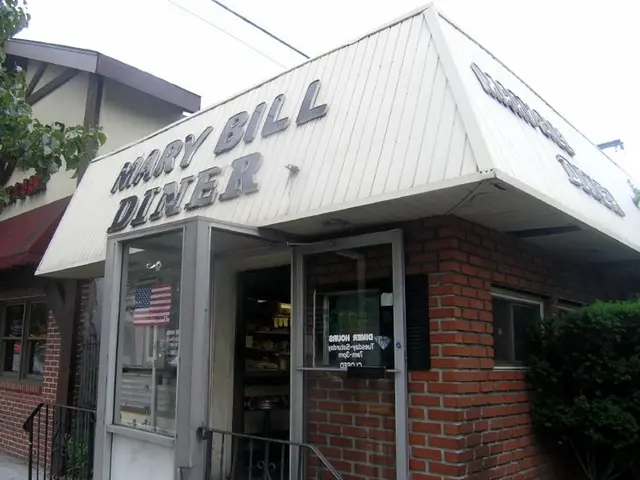Renovation of Gertraudenfriedhof's Main Building to High Monumental Quality
In the heart of Halle (Saale), the Gertrauden Cemetery stands as a testament to the city's rich artistic heritage and historical significance. The cemetery, built between 1912 and 1914 as a part of the northeastern expansion of the city along Dessauer Street, is a "modern purpose-built cemetery" designed by city planner Wilhelm Jost and architect Georg Lindner.
The cemetery complex, a total work of art, merges architecture, landscape, and art into a single unit. The architecture of the crematorium and funeral hall, designed in a deliberately simple and serious style, is an impressive example of neoclassical large-city cemetery architecture in the early 20th century. The historic building complex, after a three-year construction period, has been fully renovated at a cost of approximately 2.3 million euros, all funded from the city's own funds.
During the renovation process, several sculptures were installed back on the columns east of the funeral hall. Among these was a pair of sculptures depicting a man and a woman holding a raised and a lowered, extinguished torch respectively, symbolizing life and death. These statues, originally created by sculptor Paul Horn, were recreated in 2020 by Swiss conservation/restoration specialist Maya Graber.
Graber's work typically involves the delicate cleaning, structural stabilization, and careful repair of stone and metal artworks. For the Gertrauden Cemetery project, she ensured the original artistic intent and historical authenticity were preserved. This included detailed documentation of the condition of each sculpture prior to intervention, the materials and techniques used in the restoration process, and post-restoration care guidelines.
The extensive renovation also included the renewal of the ceiling cladding in the arcade area, the restoration of the historic monk-nun tile roofing, and the replacement or maintenance of windows according to the original design and color scheme. Most of the facades have been newly plastered, and stucco elements on pillar reinforcements have been restored.
René Rebenstorf, Deputy Mayor for Urban Development, Environment and Security, expressed his pleasure at the renovation of the significant structure from an urban planning perspective. The Gertrauden Cemetery is not only a cultural treasure but also a dominant urban planning element beyond the cemetery, of great importance due to its impact.
The renovated Gertrauden Cemetery in Halle serves as a reminder of the city's past, a tribute to its artistic heritage, and a symbol of its commitment to preserving its cultural value for future generations. For those interested in more specific details about Maya Graber’s restoration work at Gertrauden Cemetery, local heritage conservation organizations in Halle (Saale) or the city’s cultural office might provide further information. Academic or municipal reports on the cemetery’s renovation might also offer more in-depth insights.
Wilhelm Jost, who significantly shaped the cityscape for nearly 30 years, is buried in this cemetery. His legacy lives on in the beautifully renovated Gertrauden Cemetery, a testament to his vision and the city's dedication to preserving its historical and cultural landmarks.
- As a cultural treasure and an important urban planning element, the Gertrauden Cemetery's renovation extends its influence beyond the cemetery, offering insights into the city's historical artistic heritage, much like the fashion-and-beauty and home-and-garden sections in lifestyle magazines showcase the tastes and trends of contemporary culture.
- The extensive restoration project, which involved careful repair and preservation of sculptures alongside architectural elements, is reminiscent of the educational process, where knowledge and understanding are continually nurtured and developed, just as one might learn about various food-and-drink cuisines from around the world, broadening their perspectives.




